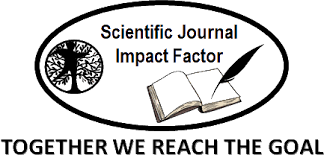Bilingualism In Psycholinguistic Interpretation
Shamsieva Manzura
doctor of Philosophy in Philological Sciences (PhD), Tashkent State University of Uzbek Language and Literature named after Alisher Navai.
Abdurashitov Naimjon Fozilovich,
Candidate of Psychological Sciences, Head of the Department of General and Pedagogical Psychology of Sadriddin Aini Tajik State Pedagogical University Republic of Tajikistan
Аннотация
In the article, the phenomenon of multilingualism and its relatively common variant – bilinguism is studied from a psycholinguistic point of view. Multilingualism is considered one of the results of the interaction of different ethnic units and has a long history. Currently, more than half of the Earth's population is multilingv, that is, it uses two or more languages in everyday life. In connection with this, changes in culture and thinking require special perception. The article describes the opinions of linguist scientists, in particular psycholinguists, inherent in the nature of bilinguism, and this phenomenon is expressed in different ways from the point of view of different scientists. Some of them believe that one of the basic language skills, such as hearing, speaking, reading or writing, is the possession of a minimum of competence, while others consider the ability to use two language freely. Based on the definitions given by scientists to bilinguism, we psycholinguistic characterize the fact that bilingual children can freely pass from one language to another. Language is considered not only as a means of expression and transmission of thoughts, but also as a single form of the occurrence of thought, the concept of the function of thought formation of language is the key to psycholinguistic ideas in the development of imaginations about bilingualism. The main form of language in which thinking occurs is speech, because by the help of idioms, communication and relationships between the objects of the world of imagination are established. It is necessary to search for the criteria of bilinguism not only from the ability to speak in another language the same way as in his own language, but also from thinking in this language; and the criteria for the ability to think in the same language are the ability to formulate direct sentences.
Библиографические ссылки
Grosjean F. Bilingual: life and reality. – Cambridge: Harvard University Press, 2010. – 276 p.
Арутюнова Н.Д. Предложение и его смысл. – М.: Наука, 1976. – 384 с.
Кубрякова Е.С. В поисках сущности языка // Кубрякова Е.С. В поисках сущ- ности языка: когнитивные исследования. – М.: Знак, 2012. – С. 63–78.
Райл Г. Понятие сознания: пер. с англ. – М.: Идея-Пресс: Дом интеллекту- альной книги, 1999. – 408 с.
Таскаева Е.Б. Многоязычие в современном мире: культурные традиции и направления исследования // Вестник Сибирского государственного университета путей сообщения: Гуманитарные исследования. – 2017. – № 2. – С. 50–57.
Austin J.L. How to do things with words. – London: Oxford University Press, 1962. – 166 p.
Bloomfield L. Language. – London: George Allen & Unwin, 1935. – 566 p.
Garcia O., Lin A.M.Y. Translanguaging in bilingual education // Bilingual and Multilingual Education / O. García, A.M.Y. Lin (eds.). – 3rd ed. – Cham, Switzerland: Springer, 2017. – P. 117–130. – (Encyclopedia of Language and Education).
Hammers J., Blanc M. Bilinguality and bilingualism. – Cambridge: Cambridge Uni- versity Press, 2000. – 458 p.
Macnamara J. The bilingual’s linguistic performance – a psychological over- view // Journal of Social Issues. – 1967. – Vol. 23, iss. 2. – P. 58–77.
















